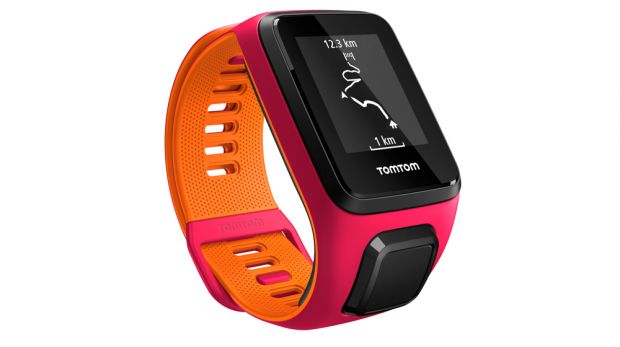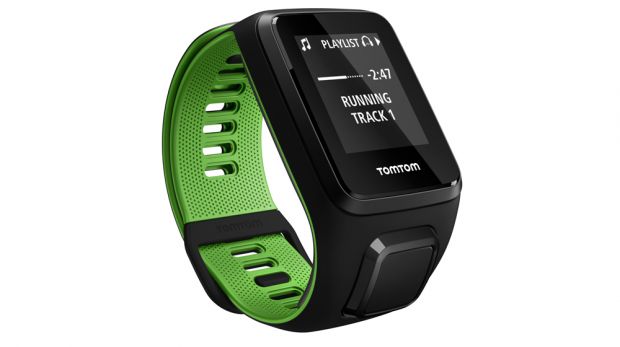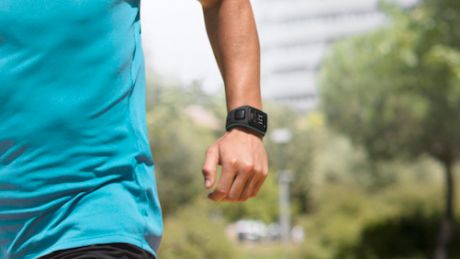Our Verdict
Things we liked GPS exploration features allow you to upload and follow a route, or freestyle it and let the Spark 3 show you the way home Brilliant running features, including interval training and the option of built-in memory for your music library The long battery life – 11 hours with GPS enabled, three weeks without It’s waterproof with decent swimming features, namely SWOLF (Swim Golf) scores The heart rate tracking proved to be accurate during training Things we didn’t like The app doesn’t compare well with the competition and is slow to sync The sleep tracking is poor – a shame since it’s comfortable enough to be worn in bed and doesn’t have to be charged every night
You can trust Coach
Spark 3 Cardio + Music: £220, buy on tomtom.com | £205.28 (at time of review), buy on amazon.co.uk
TomTom Spark 3 In-Depth
The third iteration of TomTom’s Spark line is a mighty fine GPS tracker. That’s especially true for runners, who also have the option of the version named the Runner 3 (identical to the Spark aside from different-coloured straps, and which you’ll probably find in dedicated running stores). There are four different iterations of the Spark 3 to consider, ranging from the basic GPS version (£120) up to the Cardio + Music (£220), which includes heart rate monitoring and space for 500 songs. You can also get the Spark 3 with just music or just heart rate tracking (both £170). We tested the Cardio + Music version.
Using the TomTom Spark 3 as a heart rate monitor
Wrist-based optical heart rate trackers get a bad rap, which is largely deserved because they’re typically not that accurate, but the Spark 3 is a welcome exception to that rule. We tested it against a Wahoo Tickr chest strap and it was impressively accurate even during interval runs, giving an average heart rate just a couple of beats per minute different to the Tickr at most.
During exercise you can not only see your heart rate, but also what zone that puts you in, rated from “1 Easy” to “5 Sprint”. You can even set which of these zones you’d like to be in during your session and the Spark will help to keep you there throughout by buzzing on your wrist when you’re not putting in enough effort.
For example, you can opt for an easy run or cycle where you spend as much time as possible in the “2 Fat Burn” zone, then the Spark will show a live graph of your heart rate during the workout – impressive stuff. You can also view the graph in the app once it’s synced.
The Spark will also check on your heart rate throughout the day and give a resting heart rate reading in the app. It’s a useful metric that can give an indication if your activity is paying off in the long term.
Remember, heart rate tracking doesn’t come on the most basic £120 version of the Spark, but in our opinion it’s worth the upgrade.
Using the TomTom Spark 3 to track activity
There are seven sports modes on the Spark: running and cycling (with indoor and out modes for both), swimming, gym and freestyle. We focused on the running, cycling and swimming, all of which it tracks admirably, although it doesn’t pick up on exercise automatically like many trackers – you have to click the buttons (what a liberty!).
The built-in GPS means you can be sure all your outdoor exploits are tracked accurately. One black mark is the lengthy amount of time it takes to sync activities, especially with GPS, to the app. Sure, it might only be an extra minute compared to other trackers but still, for today’s ultra-demanding consumer (well, reviewer anyway), it’s annoying.
Using the TomTom Spark 3 for running
Alongside the Spark 3 TomTom has released the Runner 3, which is exactly the same device except that it’s sold in running shops has different-coloured straps available. Whatever you call it, the Spark/Runner 3 is just about the best friend a runner could have.
The main upgrade on the Spark 2 is Route Exploration. Not only can you upload routes via the TomTom Sports app and then follow them on the watch, but you also leave a trail whenever you head out running, which means you can start exploring without any fear of getting lost. The display is a simple map you can zoom in on, rather than full turn-by-turn navigation, but it’s enough to get you around.

This is especially useful when in an unfamiliar place, but I found that even in the area you regularly run in it’s fun to start taking turns at random without worrying about ending up miles from your house without any idea of how to get back. It also removes another reason to take your phone on a run, since you won’t need the emergency assistance of Google Maps to get home.
The Spark 3 is packed full of other features designed to appeal to runners. It picks up GPS satellites pretty quickly (45-90 seconds, generally) so you’re not standing around for ages waiting to start your run (or bike ride). While on the go you can see all your stats – distance, time, current pace, average pace, heart rate – easily. Just make sure you occasionally look where you’re going.
Then there are the many different modes you can use to guide your run. You can plan interval sessions, or set the Spark 3 to buzz every time you stop running at a certain pace or exit a given heart rate zone.
Once home,you can review all the details in the TomTom Sports App or export the data to your favourite apps like Strava or Runkeeper, which you’ll probably want to, because the TomTom app isn’t quite up to those standards just yet.
For treadmill training, the Spark is pretty good at matching the totals you’ll see on the equipment and you can adjust distance easily afterwards. It offers most of the same workout options as when outdoors, so you can set up interval sessions and the like in the warmth of a gym come winter time.
Two Spark 3 models also come with the addition of enough memory to hold 500 songs on the Music version, which can be streamed directly to the surprisingly good set of Bluetooth headphones bundled with these versions (it’ll also work with any Bluetooth earphones). This feature costs an additional £50 – but a decent pair of Bluetooth headphones will set you back more than that, and this way you can leave your phone at home.

Using the TomTom Spark 3 for cycling
Running might be the focus on the Spark 3, but it fares very well when it comes to cycling too. Indoor and outdoor riders are covered, and you can set up the same training targets as when on two feet.
You won’t get cycling-specific stats like cadence or power, but the GPS ensures you get distance, elevation, speed and splits. Perhaps one downside is that while 11 hours of battery life with GPS is more than sufficient for running, it winds down a bit quicker when you track daily commutes on a bike.
There’s less the Spark 3 can track when you hit the exercise bike, but it’ll log your heart rate and calories burned, and you can also set up and track interval sessions.
Using the TomTom Spark 3 for swimming
The Spark 3 is also an excellent ally in the pool. Once you’ve set the length of the pool, the Spark 3 will tally lengths, strokes, strokes per minute, total distance and calories.
As with the other sports, you can set targets on those metrics for your pool sessions and see how far you are towards your goal with a quick glance at the watch, which will also vibrate to keep you up to date on your progress.
The Spark 3 won’t pick out your stroke type, but does give other swim-specific data like your Swim Golf – aka SWOLF – score (the total of your strokes per length and time for the length, a lower score is better).
It’s worth noting that although the Spark tracks running, cycling and swimming well individually, there’s no dedicated triathlon mode owing to the lack of open-water GPS tracking. Garmin, Suunto and Polar all offer watches with this capability, if your main focus is triathlon.
RECOMMENDED: The Best Swimming Watches
Using the TomTom Spark 3 for step counting
The Spark is designed as a dedicated sports watch rather than an activity tracker, but it’s comfortable and stylish enough to do both and does a solid job of logging steps. Your daily and weekly totals are just a click away from the Spark and app’s home screens.
The lengthy battery life of three weeks for everyday tracking means you’re unlikely to be caught short when out and about. When you hit your goal, you get a buzz and a celebratory graphic, which is always nice.
Using the TomTom Spark 3 for calorie counting
As with steps, your daily and weekly calorie count is easily accessible on the Spark – you just have to press sideways and down from the homescreen. Naturally, you also get a calorie total for every workout. As with step tracking, it doesn’t seem like everyday calories are a big focus for the Spark, but the data is there if you want it. If you’re buying a tracker to help you count calories to lose weight, something like the Fitbit Charge 2 is a better bet.
Using the TomTom Spark 3 as a sleep tracker
A let-down on the Spark is the automatic sleep tracking, which we found to be pretty inaccurate, and it doesn’t provide the breakdown of sleep states found on other trackers. It’s clearly not something TomTom expects users to really focus on.
This isn’t a huge loss – most people who buy a dedicated GPS sports watch will likely not worry much about sleep tracking – but seeing as the Spark is comfortable enough to wear at all times and has the battery life to not need charging every night, more impressive sleep tracking would have been a nice addition.
The TomTom app
TomTom has put some much-needed work into their app over the past year and it has undoubtedly been improved, giving a decent breakdown of your activities, with splits, a map and an adjustable graph that can show heart rate, elevation and pace.
It’s still a bit short of the presentation and capabilities offered by other apps, though. It partners with the likes of Strava, Nike+ and Runkeeper, so most users will probably prefer to dive into the details of their activity there, rather than on the TomTom Sports app.
Given the impressive options for setting up and planning runs on the Spark itself, it would be great if there was an option to create a training programme, or even just a one-off session, in the app and sync it over. It would be less fiddly than setting it on the device.
How often am I going to have to charge it?
With GPS on, the Spark boasts a solid 11 hours of battery life, and without GPS enabled, it’ll last three weeks, so even frequent runners should find it gets them through a full week. If you’re cycling to work and back every day with the GPS running, it might need a midweek pick-me-up, but generally the battery is good enough that you won’t have to worry about it.
Where can I wear it without people laughing at me?
For a sports watch, the Spark’s design is pleasingly unobtrusive, especially compared with the slightly more outlandish offerings you see from its main rivals, Garmin and Polar. As such, you can pretty much wear it anywhere without looking like you’re about to shed your suit and sprint off.
Should I consider buying something else?
The TomTom Spark 3 is about as good a choice as you can make in the dedicated sports watch market, matching the features of Garmin and Polar’s comparable offerings, such as the Garmin Forerunner range and the Polar M400, and raising the bar with an excellent design and useful extras like the ability to store music and Route Exploration. The whole package offered by the Spark with Cardio + Music is tricky to beat at the price of £220.
If battery life is less of a concern for you, and you’d rather some smartwatch capabilities, then the Apple Watch Series 2 – which is also waterproof and has GPS built in – is a preferable option. But its running options are not as good as the Spark’s, plus you’ll be charging it every day.
RECOMMENDED: TomTom Adventurer Review – The GPS Sports Watch For Trail Runners, Hikers and Skiers

Nick Harris-Fry is a journalist who has been covering health and fitness since 2015. Nick is an avid runner, covering 70-110km a week, which gives him ample opportunity to test a wide range of running shoes and running gear. He is also the chief tester for fitness trackers and running watches, treadmills and exercise bikes, and workout headphones.

